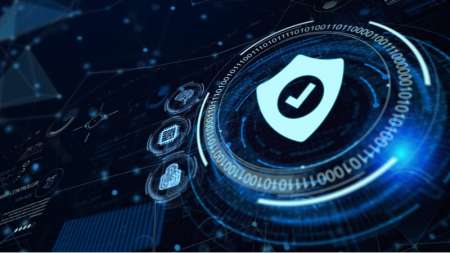The bipartisan infrastructure agreement announced with much fanfare by the White House and a handful of Democratic and Republican senators on June 24 remains a feel-good topic in the nation’s Capitol – after all, who doesn’t like the old-fashioned notion of agreement amidst partisan divides – but the longer the wait for nitty gritty details on the deal, the more questions that come to mind. […]
Like many before him, President Biden seems to recognize that a crisis presents both danger and opportunity. Facing a barrage of high-profile cyberattacks, the President’s recent Cybersecurity Executive Order also illustrates the profound opportunity in front of his administration to improve the Federal government’s cybersecurity posture by an order of magnitude. […]
Many of us are going back to work in person – and this includes the Federal government. The Office of Management and Budget (OMB), Office of Personnel Management (OPM), and General Services Administration (GSA) announced on June 10 that the 25 percent occupancy restriction for Federal offices has been lifted, and agencies will soon be able to increase the number of employees in their physical workplaces. […]
For decades, Federal chief information security officers (CISOs) focused on protecting a traditional perimeter and the users within. Today, however, they recognize that there are a seemingly endless number of third-party partners, vendors, and customer accounts, as well as service accounts – accounts which are either not directly tied to employees, or non-human accounts– which could result in compromises. […]
The old adage “consistency is key” rings especially true for Federal cybersecurity operations centers (CSOCs) today. Agencies who pay close attention to their operations center but lack visibility and control of cybersecurity blind spots – specifically applications and workloads – are ripe for attack. […]
Earlier this month, in a May 6 column, I offered up a President’s Management Agenda framework – PMA 46 – for the Biden-Harris Administration as we awaited the full FY 2022 budget proposal, which was publicly released today. While the so-called “skinny budget” released in April outlined plans for the discretionary part of next year’s […]
It is hard to believe that we are coming up on a year of living with COVID-19. In February 2020, countries around the world were beginning to institute travel restrictions, and organizations were shifting large portions of their teams to working from home. We knew that customers needed to enable their teams to work remotely, very quickly. […]
The Biden administration – less than four months after taking office – has thus far developed a reputation for going “big” with its policy and spending aims. […]
A billion of anything isn’t quite what it used to be, but it’s still a lot. And when that billion is dollars for the Technology Modernization Fund (TMF) – a great vehicle that has been underutilized because of low funding levels and strict repayment rules – it may yet end up being a real difference-maker across many government agencies looking at IT modernization. […]
President Biden on April 9 released a massive $1.52 trillion fiscal year 2022 spending plan that reflects his vision of an expanded – and expansive – Federal government that boosts spending for domestic programs and addresses issues such as education, affordable housing, public health, racial inequality, and climate change, among many others. […]
Disinformation is undoubtedly on more people’s radars – Federal IT pros included – heading into 2021 and beyond. But just because we know more about it doesn’t mean we are better prepared to face the challenge that disinformation is posing. […]
The United States was once a leader in the collection and utilization of public health data. As the COVID-19 pandemic wears on, the United States must resume its leadership in this domain. […]
With many states admitting to substantial fraudulent payments due to poor management and problematic unemployment insurance (UI) application systems, what are they doing about fraud in other state programs that collectively make up another giant elephant in the room? […]
While the latest Federal Information Technology Acquisition Reform Act (FITARA) scorecard shows all agencies have passing total scores, not one agency’s Cyber score changed from the FITARA 10.0 scorecard issued earlier in 2020. […]
The security operations center (SOC) has become the critical hub of Federal agencies’ cyber readiness. SOC analysts keep agencies safely up and running – determining the size and impact of incidents, utilizing threat intelligence, implementing response procedures and collaborating with other staff to address issues. […]
As remote work shifts to hybrid work for the long term, Federal agencies need continued (and even stronger) cloud security. […]
After a decade-long initiative to expand telework, the COVID-19 pandemic has shifted the federal government’s workforce to cloud-based telework, practically overnight. While improving workforce flexibility seems like the obvious benefit, federal agencies can also take this opportunity to leverage the extensive ecosystem of open source partners and applications to boost their multicloud modernization efforts. Agencies that work […]
Following the release of the FITARA Scorecard 10.0 in August, discussion about sunsetting the MEGABYTE category of the scorecard has picked up. But, is that really a good idea? […]
As the seriousness of the coronavirus pandemic became apparent early this year, the first matter of business for the Federal government was simply getting employees online and ensuring they could carry on with their critical work and missions. This is a unique challenge in the government space due to the sheer size of the Federal workforce and the amount of sensitive data those workers require – everything from personally identifiable information to sensitive national security information. And yet, the Department of Defense, for one, was able to spin up secure collaboration capabilities quite quickly thanks to the cloud, while the National Security Agency recently expanded telework for unclassified work. […]
The COVID-19 pandemic has influenced the way agencies function, and forced many to redefine what it means to be connected and modernize for mission success. […]
When agencies began full-scale telework earlier this year, many were not anticipating it would evolve into a long-term workplace strategy. However, in the wake of COVID-19, recent calculations estimate $11 billion in Federal cost-savings per year due to telework, as well as a 15 percent increase in productivity. Agencies are determining how they can continue to modernize – and therefore optimize – to support greater efficiency into the future. […]
Over the past few months, agencies have strengthened remote work tools, increased capacity, improved performance, and upgraded security to enable continuity of operations as employees work from home and in various new locations. […]
The Federal government collects and manages more data outside of traditional data centers than ever before from sources including mobile units, sensors, drones, and Artificial Intelligence (AI) applications. Teams need to manage data efficiently and securely across the full continuum – edge to core to cloud. […]
The recent, rapid shift to remote work has been a lifeline for the economy in the wake of the COVID-19 virus. But that shift also took an already-growing attack surface and expanded it. Government agencies were being called to rethink their cybersecurity posture and become more resilient even before the pandemic. Now, the novel coronavirus has added an indisputable level of urgency on that demand. […]
COVID-19 has changed daily life as we know it. States are beginning to reopen, despite many case counts continuing to trend upwards, and even the most informed seem to have more questions than answers. Many of the answers we do have, though, are the result of models and simulations run on high-performance computing systems. While we can process and analyze all this data on today’s supercomputers, it will take an exascale machine to process quickly and enable true artificial intelligence (AI). […]
Many more people are working at home these days, and although much of this started with COVID-19, remote work from home (WFH) could become standard procedure for businesses around the world. […]
Our government is facing a challenging moment. Confronted with an unprecedented pandemic, agencies are having to dramatically ramp up their services for our country while large portions of the workforce cannot be in the office. Now more than ever, it is essential that government employees have access to IT systems and tools that are optimized to help them achieve their critical missions. […]
In March, the White House released guidance that encouraged government agencies to maximize telework opportunities for those at high risk of contracting the coronavirus, as well as all employees located in the D.C. area. Though there are still many government employees not yet authorized to telework, this guidance marks a turning point. […]
We’ve spent the last several months in a bit of a surreal version of normal but there is light at the end of the proverbial tunnel. When we emerge from the current environment, the reality is that we will be better off from a security perspective than we were when we went in. The additional need to increase the capacity of access of cloud-based apps, VPN or “other” have required us to think a lot harder about the security that comes along with this extra access to the point where “building it in” makes a lot more sense than “bolting it on.” […]
The NIST Cybersecurity Framework, initially issued in early 2014, outlines five functions with regard to cybersecurity risk: identify, protect, detect, respond, and recover. Of these functions, those on the far left encapsulate measures that could be considered pre-breach; those on the right, post-breach. Far too often, however, government agencies tip the scales too far to the left. […]
Archives
- June 2025 (3)
- May 2025 (2)
- April 2025 (3)
- March 2025 (2)
- December 2024 (1)
- August 2024 (3)
- July 2024 (1)
- June 2024 (5)
- May 2024 (1)
- March 2024 (1)
- December 2023 (2)
- September 2023 (2)
- August 2023 (2)
- June 2023 (2)
- May 2023 (2)
- April 2023 (1)
- March 2023 (2)
- February 2023 (2)
- January 2023 (1)
- December 2022 (2)
- November 2022 (2)
- October 2022 (6)
- September 2022 (7)
- August 2022 (1)
- June 2022 (3)
- April 2022 (2)
- March 2022 (6)
- February 2022 (3)
- January 2022 (1)
- December 2021 (3)
- November 2021 (5)
- October 2021 (2)
- September 2021 (2)
- August 2021 (7)
- July 2021 (2)
- June 2021 (3)
- May 2021 (3)
- April 2021 (4)
- March 2021 (1)
- February 2021 (1)
- December 2020 (1)
- November 2020 (1)
- October 2020 (5)
- September 2020 (1)
- July 2020 (3)
- June 2020 (3)
- May 2020 (2)
- April 2020 (1)
- March 2020 (1)
- February 2020 (2)
- January 2020 (3)
- November 2019 (1)
- October 2019 (1)
- July 2019 (2)
- April 2019 (1)
- February 2018 (1)
- December 2017 (1)
- November 2017 (2)
- October 2017 (1)
- September 2017 (5)
- July 2017 (1)
- June 2017 (2)
- March 2017 (2)
- November 2016 (1)
- October 2016 (5)
- September 2016 (3)
- August 2016 (1)
- July 2016 (2)
- June 2016 (1)
- May 2016 (1)
- April 2016 (2)
- March 2016 (3)
- January 2016 (1)
- December 2015 (1)
- November 2015 (1)
- September 2015 (2)
- August 2015 (2)
- July 2015 (3)
- May 2014 (1)
- November 2013 (1)
- August 2013 (1)

























